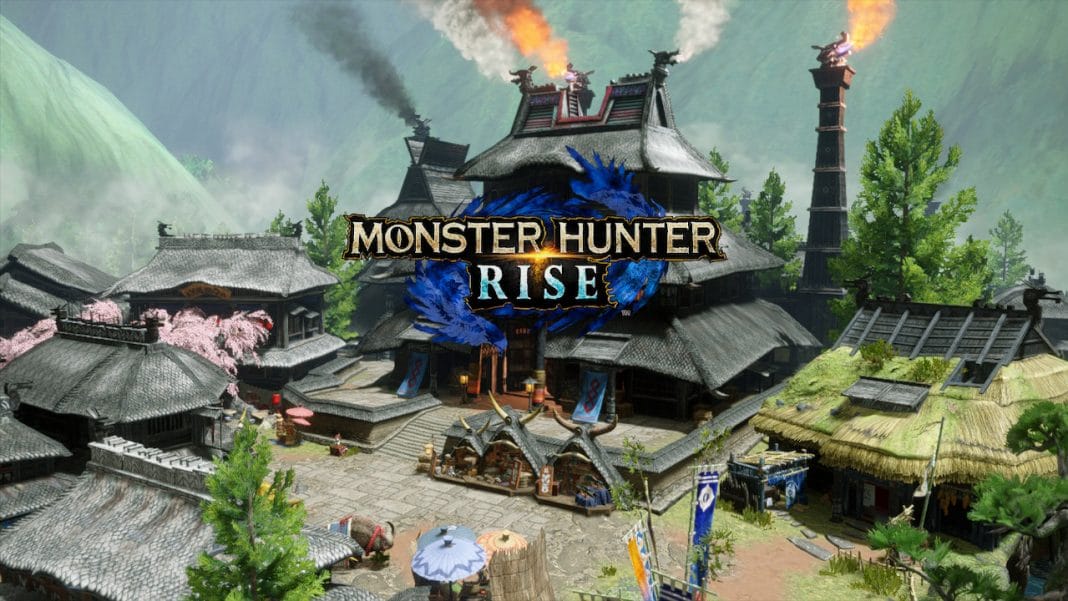A new Nintendo Switch Monster Hunter game has been a long time coming and Monster Hunter Rise has finally arrived on Nintendo’s hybrid system four years after the system debuted. While Monster Hunter Generations Ultimate satiated older fans for a little while, it was still an enhanced release that still was flawed in many ways compared to even earlier entries like the superlative Monster Hunter 4 Ultimate. With Monster Hunter Rise, Capcom has delivered what feels like the best of older Monster Hunter games and Monster Hunter World: Iceborne with only one thing holding it back in its current state and here’s what you need to know after about 100 hours in Monster Hunter Rise.
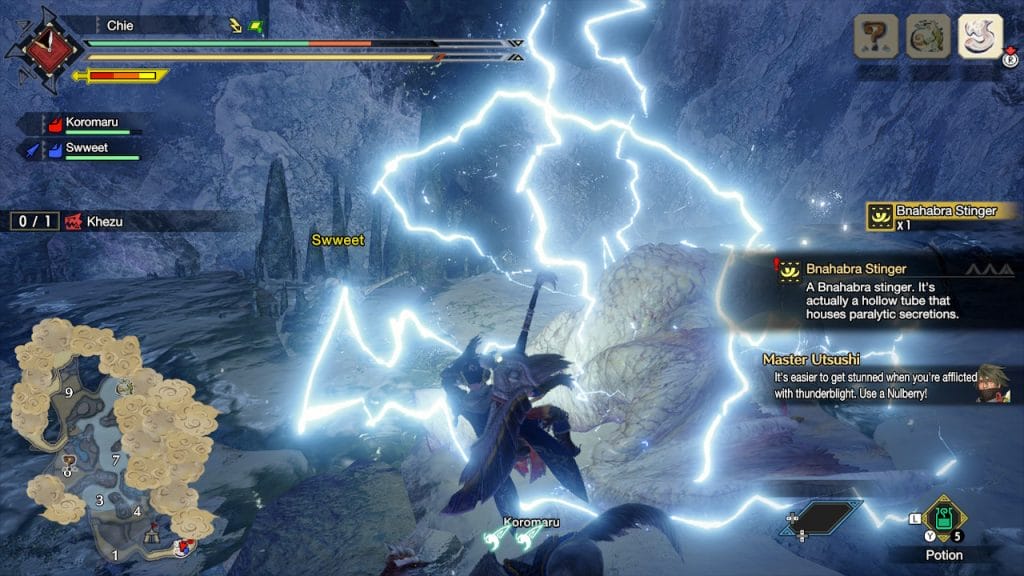
Right from the initial reveal for Monster Hunter Rise, it is obvious that Capcom was going for an aesthetic influenced from Japanese folklore including youkai designs and the game even has a very traditional feel in the music and a lot of the iconography. This coupled with the wirebug being something that has influenced a lot of the game’s design has resulted in a Monster Hunter game that feels familiar yet fresh. Those who played Monster Hunter Generations Ultimate with its over the top skills and those who played Monster Hunter World: Iceborne with its wealth of quality of life improvements will find a lot to love when it comes to how each weapon has been balanced and designed in Monster Hunter Rise.
Monster Hunter Rise’s hub is Kamura village which is full of memorable NPCs who will help you out in the potential hundreds of hours you invest into the game across its base game and all the updates to come. The story in Monster Hunter Rise focuses on the Rampage that has multiple hordes of monsters trying to attack Kamura village. As a hunter, it is your duty to protect the village and its people while engaging the rampage in the Stronghold which is a location built to take on the hordes.
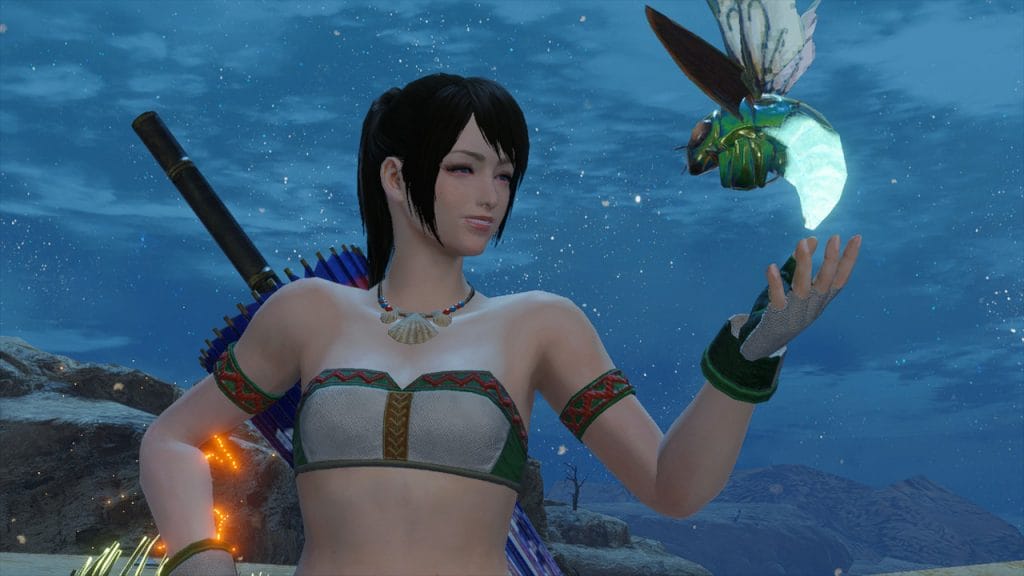
I mentioned the wirebug being a huge part of Monster Hunter Rise and this carries over not just to the various weapons but also to the different maps and even Kamura village. You can use your wirebug to zip around and get across large maps in almost no time once you get the hang of things. I love how the maps and gathering points (and even some hidden locations with some nice surprises) are designed to reward those who spend time learning the ins and outs of the wirebug. You can even use the wirebug to zip onto tall structures in the village for some lovely photographs with the in-game camera.
The blend of old and new in Monster Hunter Rise also carries over to its quest design. Monster Hunter Rise has quests split up into village quests that can only be done solo and hub quests that can be done solo or in multiplayer. The best part is hub quests will now scale according to number of players and change with players dropping in and out. Quality of life improvements like this are great to see. Those who only enjoy Monster Hunter with friends will be pleased to know that you can avoid village and play hub with friends to your heart’s content. Those who do village early on will even be able to skip the initial parts of hub so there’s as little time wasted as possible.
Speaking of not wasting time, Capcom finally lets multiple players join the same quest together and not have to watch cut-scenes individually before other players can join in like in Monster Hunter World. Urgent quests that let you progress to the next difficulty tier or hunter rank here can also be done together with no insistence on the quest poster only completing it forcing players to redo quests. Changes like this already make the online experience of playing with friends multiple times better than prior games.
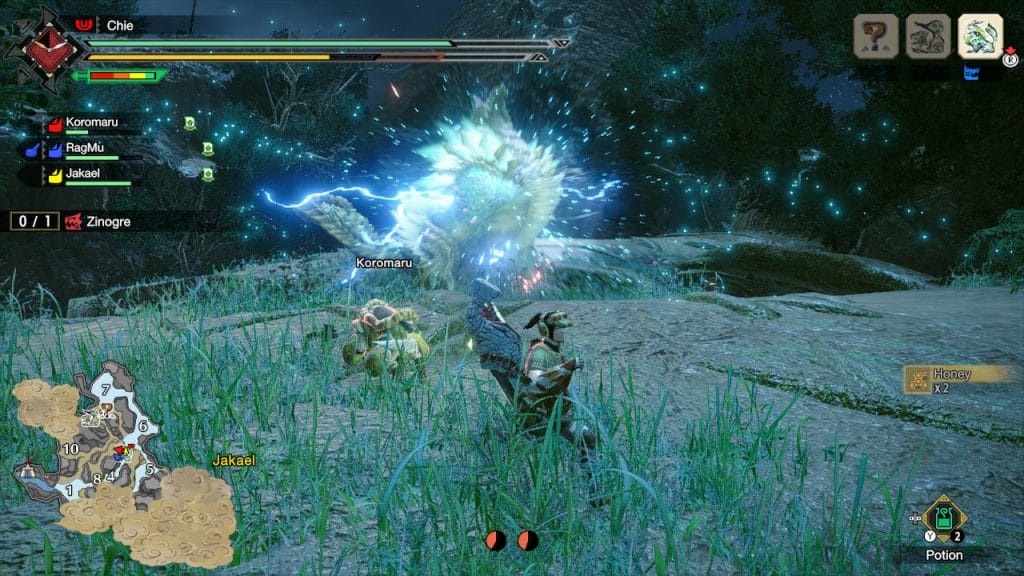
When it comes to multiplayer, there’s even an SOS-like system where you can post a join request so that those looking to help others can join your session and help out. The SOS system was great in Monster Hunter World and I’m glad to see a similar system here. The lobbies in Monster Hunter Rise are limited to four players but I love how all players can move around Kamura village and check out everything together. You aren’t restricted to the gathering hub if you want to interact with other hunters in Monster Hunter Rise.
Another blend of features from old and new Monster Hunter games is in the skill system. Decoration RNG from Monster Hunter World is gone and replaced with craftable decorations like in earlier games but the armor skill system is that of Monster Hunter World. Allowing decorations to be craftable but charms dependent on RNG is a better solution because decorations are a bigger part of your build so the end result here is giving you more control with your build.
Capcom did a fantastic job with the new and returning monsters across the quests you go on during the main story. Goss Harag is easily my favourite of the new ones alongside Magnamalo. Both hunts are superb when coupled with the new mechanics like wyvern riding and the wirebug attacks and evades. Without getting into any spoilers, the final boss quest in Monster Hunter Rise is a sight to behold and definitely one of the more memorable ones in the series so far not just for its visuals but the way it uses the wirebug and other mechanics perfectly. The only real questionable monster to come back is Jyuratodus who remains one of the worst monsters in the series.
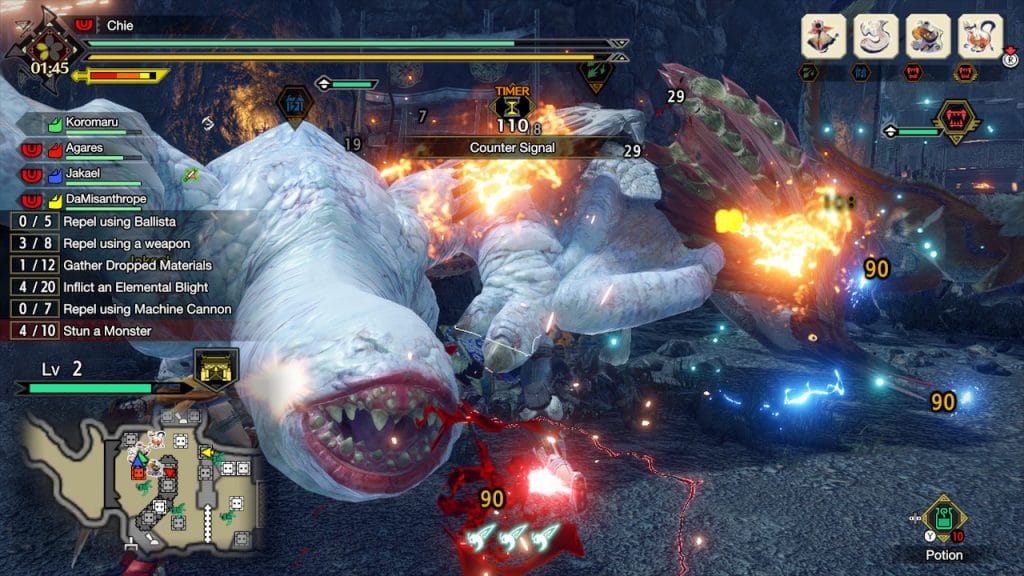
One of the best changes and additions Monster Hunter Rise brings to Monster Hunter is replacing the annoying siege missions with Rampage quests. Rampage quests play out like tower defense encounters where you repel hordes of monsters and protect the Stronghold gate. These are a combination of strategy and hunting prowess as they require thinking on the go, being able to hunt and also the ability to use the wirebug quickly when you need to get onto the higher platforms. After the initial Rampage quest that is basically a glorified tutorial, the later ones are an adrenaline rush and an absolute blast in multiplayer with all the monsters, hunters, canons, and more going off at the same time. I was pretty surprised at how well the Switch could handle so much on screen during these quests.
I liked Monster Hunter World’s turf wars for the spectacle quite a bit but wyvern riding in Monster Hunter Rise is a superb addition. Once you get a monster into a mountable state through various means, you can ride it and control it like a puppet while using its own attacks on other monsters. This is a ton of fun and it also lets you do a lot of damage. If there’s no other monster there, you can ram the current one into the wall a few times before attacking it once it’s down. I had a few hunts where we were hunting a Rajang and someone mounted and brought Magnamalo to attack Rajang. This was easily one of the highlights of all my years playing Monster Hunter.
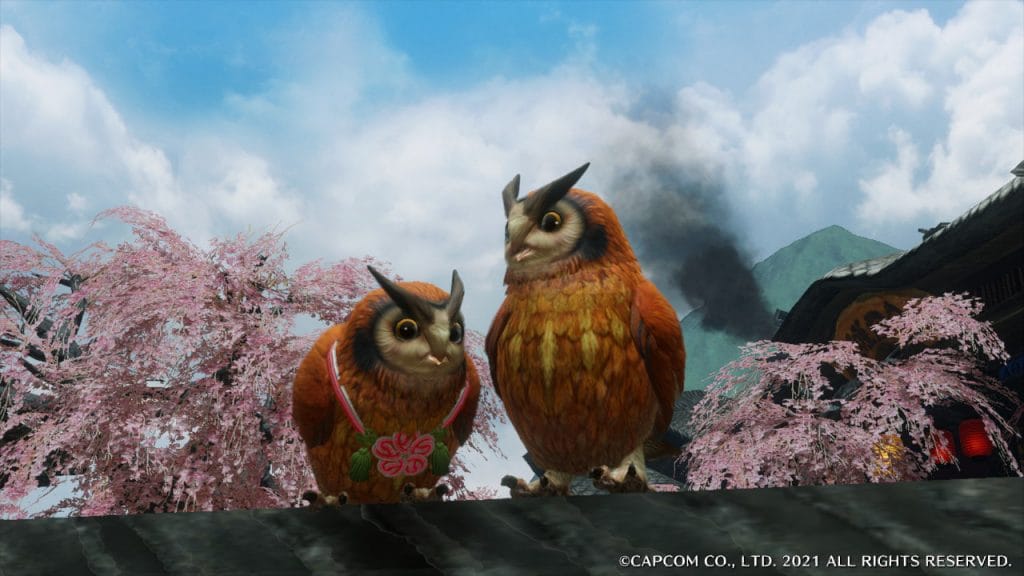
The focus on endemic life in Monster Hunter Rise is also very interesting. It rewards exploration and interaction with maps giving you buffs to armor, attack, health, stamina, and more slowly as you slowly come into contact with the endemic life scattered across. Some interactions even reward you with a lot of boosts together and this encourages players to follow different paths while approaching monsters in different paths of the map. These aren’t essential but they definitely help overall with every little buff bringing you closer to a quicker victory. Some other changes and additions from Monster Hunter World that I’m glad Monster Hunter Rise are the ability to restock items and eat at camp, additional camps in maps, secrets, and more.
Visually, Monster Hunter Rise is easily a technical showcase for the Nintendo Switch. It uses Capcom’s RE Engine and can look absolutely stunning. Monsters from older games, Monster Hunter World, and even the new ones introduced in Monster Hunter Rise are detailed and look fantastic. The environments are also nice and big but not completely barren like in some earlier games. Don’t expect the fidelity of Monster Hunter World but Monster Hunter Rise is a massive leap over most games on Nintendo Switch and it is easily one of the most visually impressive games I’ve played on the system ever. I just wish some parts of each map weren’t so washed out.
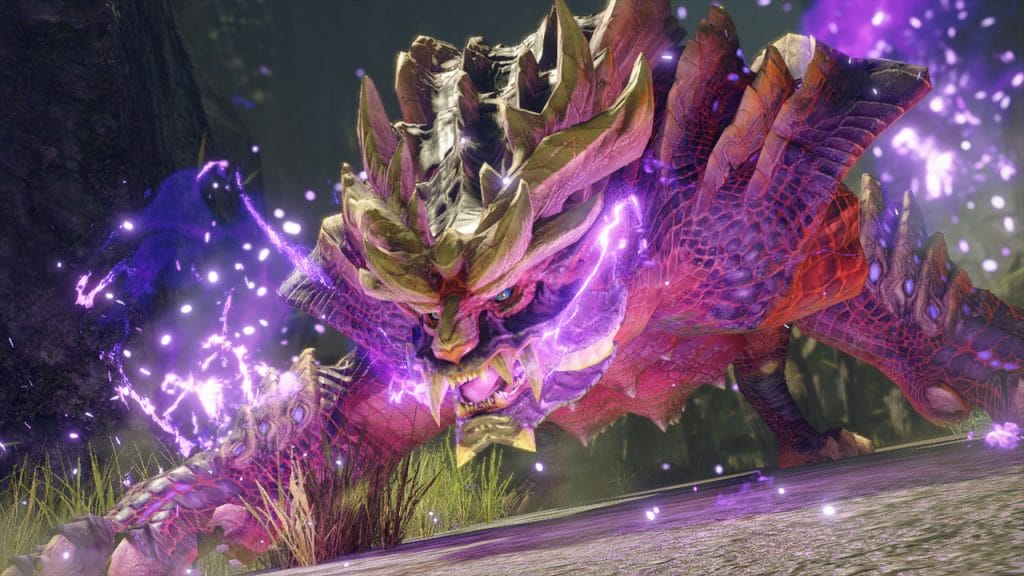
Performance is mostly good but there are some areas where the frame rate really struggles. The Flooded Forest in particular has lots of slowdown when things get busy and given the 20 or so quests I did there online and offline, it basically should be called the Frame drop Forest. Hopefully this can be improved in post-launch patches. Other than that, I was very impressed at how good Monster Hunter Rise feels both docked and handheld even in the more busy rampage quests with multiple monsters, hunters, and palamutes. I also love how Capcom actually designed the UI to look and feel good both docked and handheld unlike most developers who just design for TV or monitor play and ignore handheld scaling.
The only downside for the visuals is the draw distance and some shadow flickering. The former is pretty great for large monsters but for gathering points and smaller monsters, it can get really bad. You can even see the environmental mountain textures load gradually as you run towards an area or on your palamute. Monster Hunter World made use of lower frame rate animations for monsters in the distance but Monster Hunter Rise seems to do that at a pretty close distance sometimes and it feels pretty jarring in some maps. The shadows are very inconsistent in the game when it comes to quality.
The audio in Monster Hunter Rise is a bit of a mixed bag. The music is phenomenal across new songs and older monster themes arranged in the new style. Monster Hunter Rise’s score uses a lot of traditional instruments like the Shamisen, Shakuhachi, and more with vocal backing to even many popular older songs. My only complaint with the music is how Rajang’s theme is a downgrade compared to his Monster Hunter World: Iceborne version. You can change the music in many parts of the village but I opted to keep the village music the same because it reminds me of Utawarerumono with its vocal style.
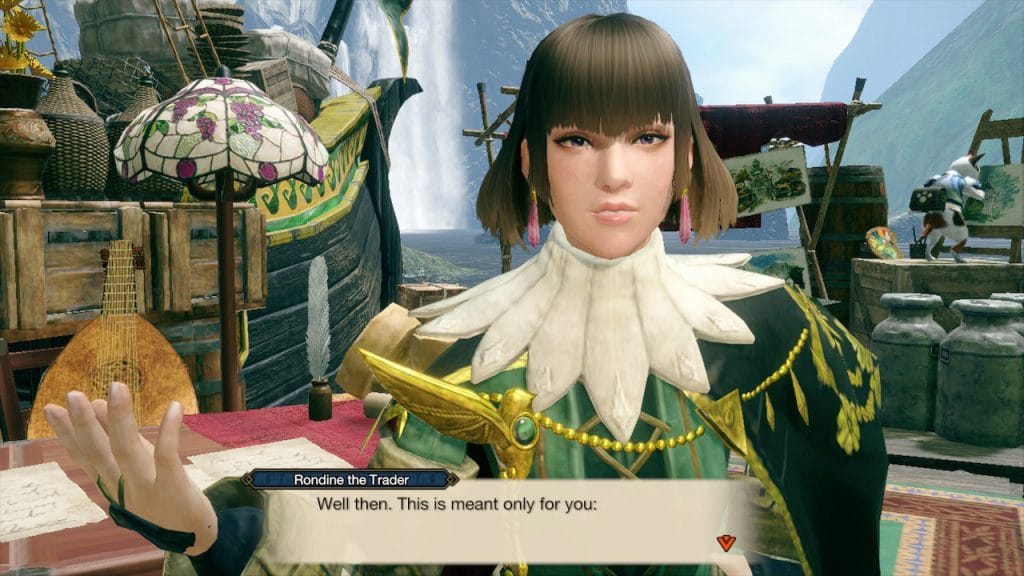
Monster Hunter Rise includes support for English, Japanese, and Monster Hunter language voice acting. This is a bit inconsistent and you will likely need to tweak the audio settings to make it feel right. While I was annoyed by all three voice options in the demo, the full game’s implementation is a bit better and I quite enjoyed the English voice acting by the end. Thankfully a lot of this is adjustable in its frequency and volume. The rumble in Monster Hunter Rise not just when attacking but also with monster roars is excellent and I was glad to see it included in the full game after both demos lacked any rumble.
The biggest problem Monster Hunter Rise has right now is that there just isn’t much to do once you finish the key and urgent quests. There’s basically no real postgame available right now barring grinding the same rampage quests for materials to upgrade rampage weapons. These specific quests rotate in and out as well so you can’t even guarantee being able to farm a specific monster because of the RNG involved.
Until the next major update that will hopefully add more than just new monsters, get ready to either focus on rampage weapons that are like the customisable Safi’jiiva weapons but with less RNG involved for skills and repeating older quests. This combined with the fact that the current story ends on a massive cliffhanger makes Monster Hunter Rise feel like a game that isn’t finished despite the amount of content included. Expect to finish what is currently available in about 50 hours and have not much to do until the next update unless you want to work on building a lot of sets for other weapons and elements like I ended up doing.
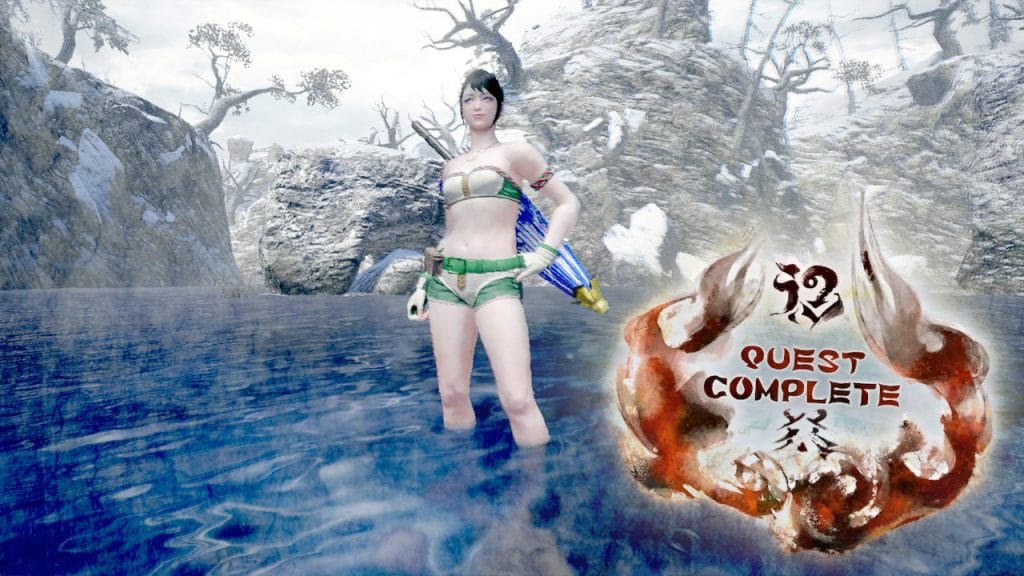
Monster Hunter Rise has the potential to be one of the best games of the generation once it gives me more to do in-game and once the story is complete because even the first title update feels like it should’ve been available right now but isn’t likely to have the game ship before the end of the financial year deadline.
Overall, Monster Hunter Rise is a fantastic experience and easily one of the best games you can play on Nintendo Switch right now even in its current state. Just like how Monster Hunter World took the franchise forward, Monster Hunter Rise delivers. Hopefully the updates arrive sooner rather than later so that the game can feel complete with an actual postgame as opposed to repeating Rampage quests and older quests. In a lot of ways, this feels like Monster Hunter Portable 5th in the best way possible and I look forward to playing this for years to come.
